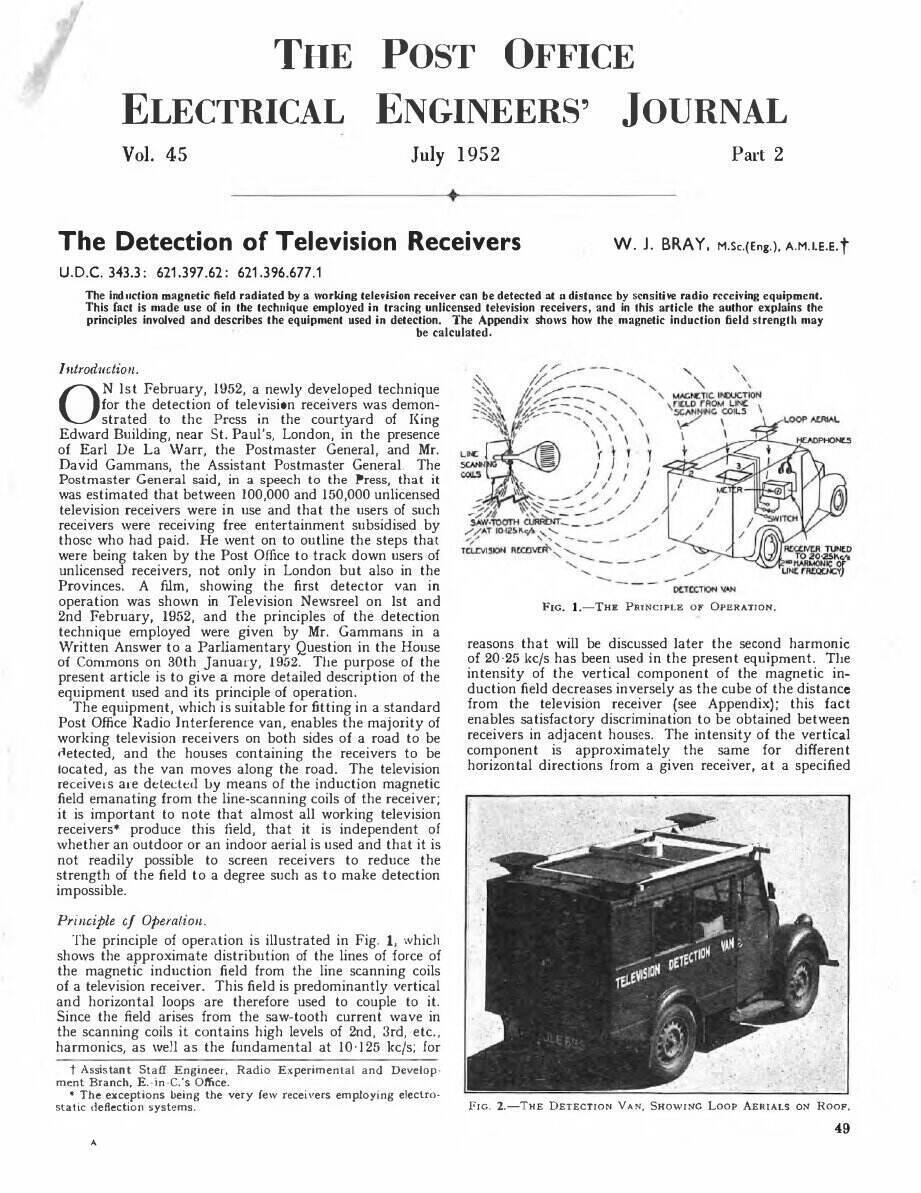
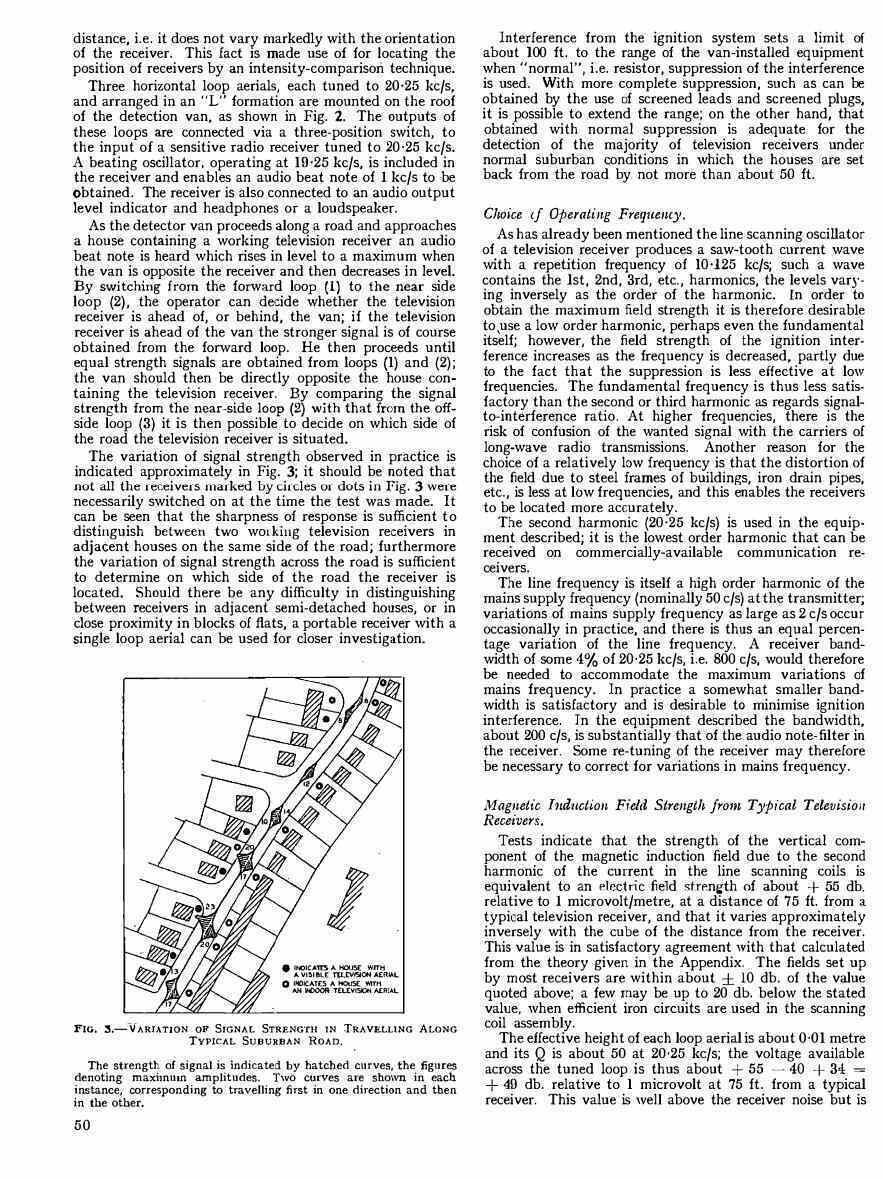
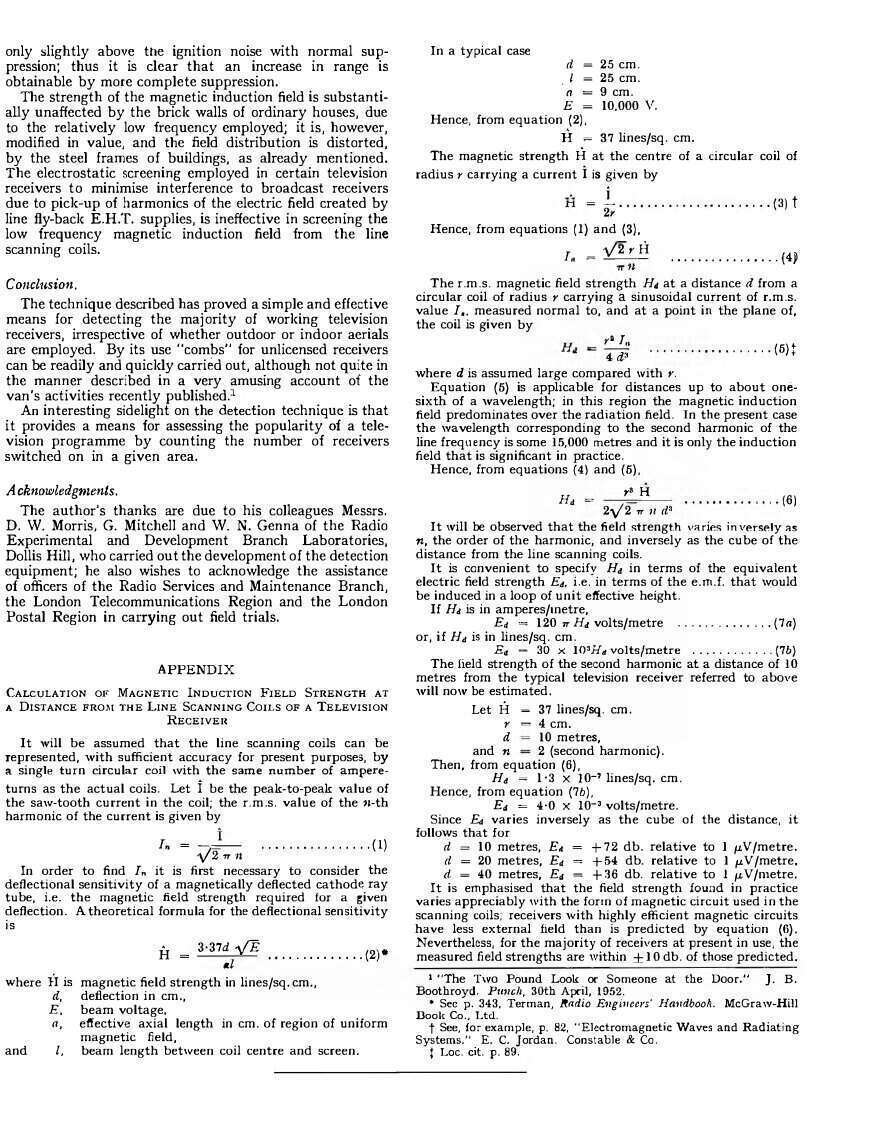
Once the ITA started broadcasting, this created difficulties with the previous system. As described in the following article from January 1963, the next system detected local oscillator radiation. It could also locate superhet VHF FM receivers.
Viewing licences have always been required
in the UK to fund their government owned broadcaster, the BBC. Detection
vehicles were thus designed and built to locate operating television sets
in the 405 line era.
Not surprisingly, the technology was developed
further when the 625 line UHF service commenced.
An operating television set, at an address
that was not listed as licenced, would therefore draw attention.
Contrary to some internet opinion, the
detector vans were not fake, but were designed using well known radio engineering
principles.
The first type of detection relied on
harmonic radiation from the set's line deflection coils.



Once the ITA started broadcasting, this
created difficulties with the previous system. As described in the following
article from January 1963, the next system detected local oscillator radiation.
It could also locate superhet VHF FM receivers.
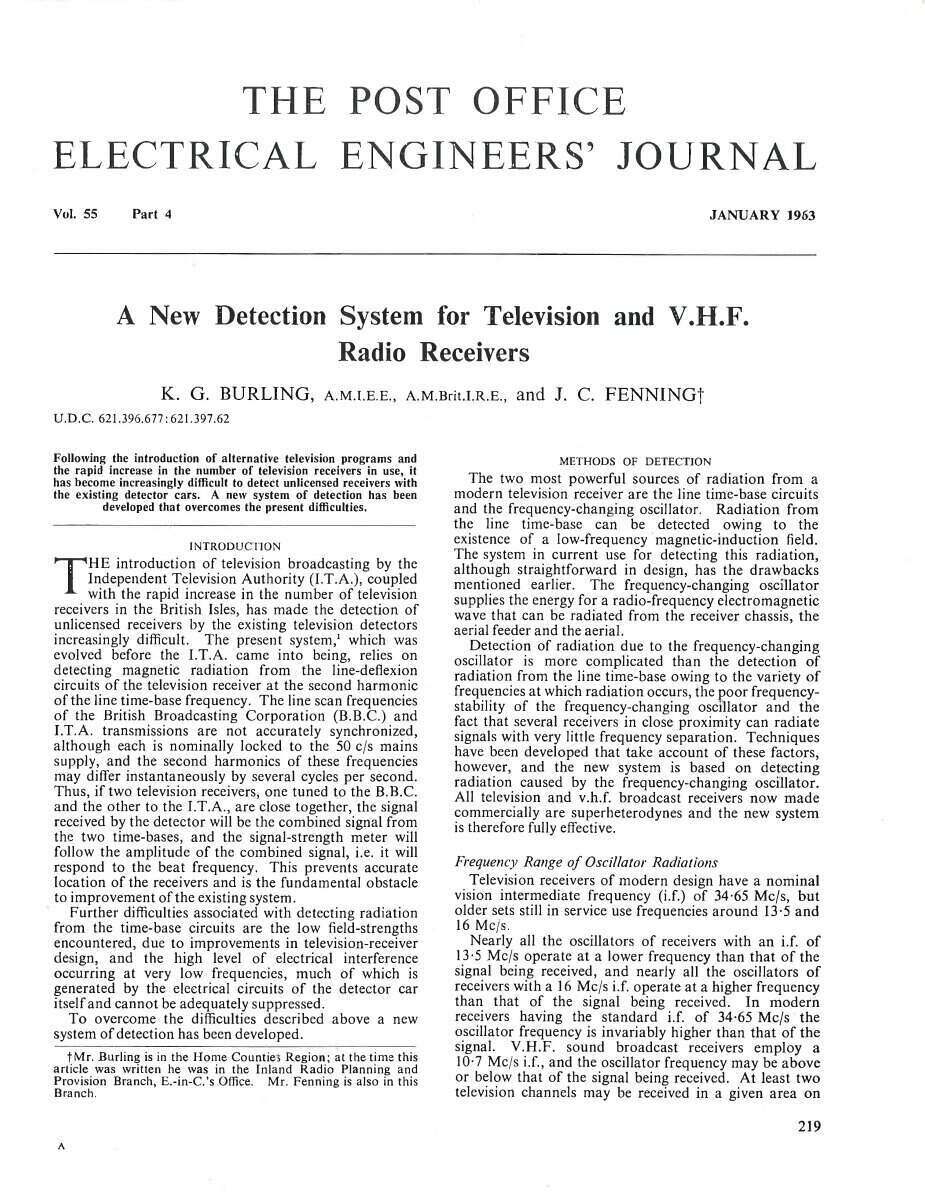
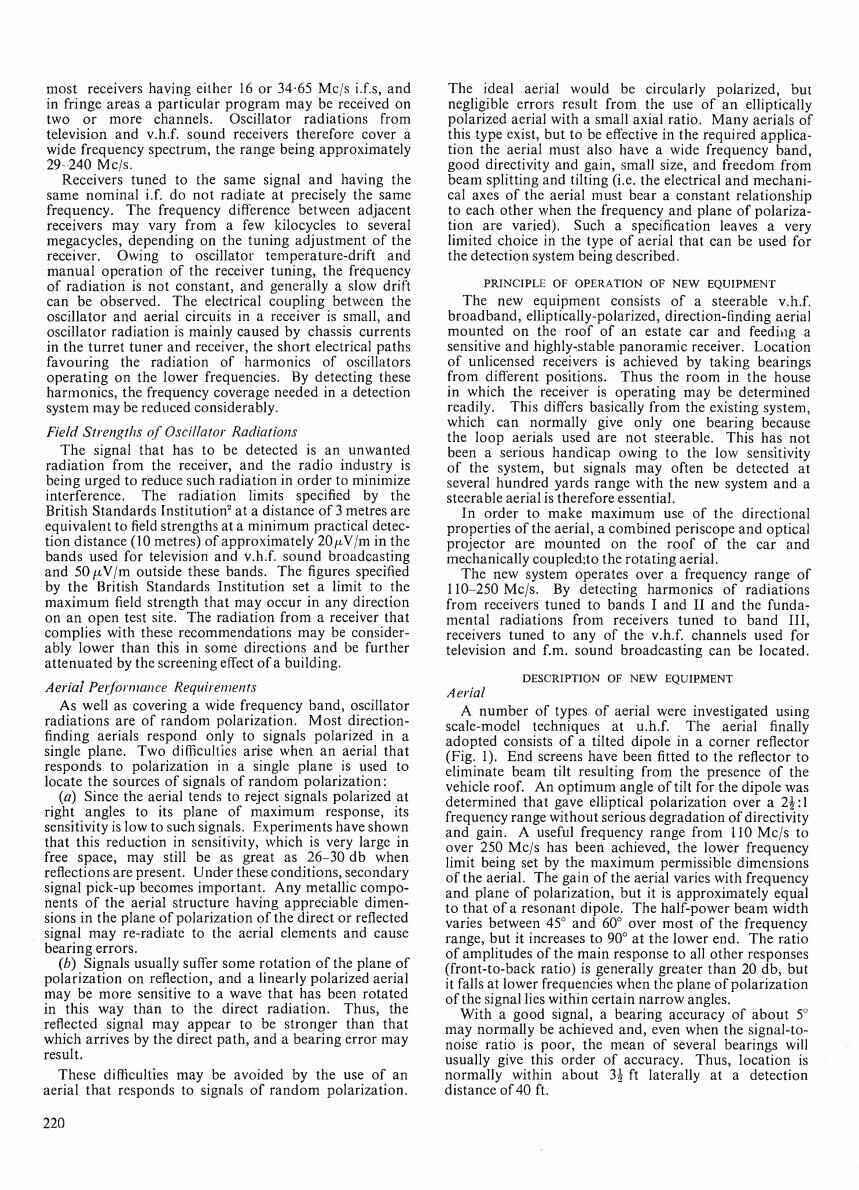
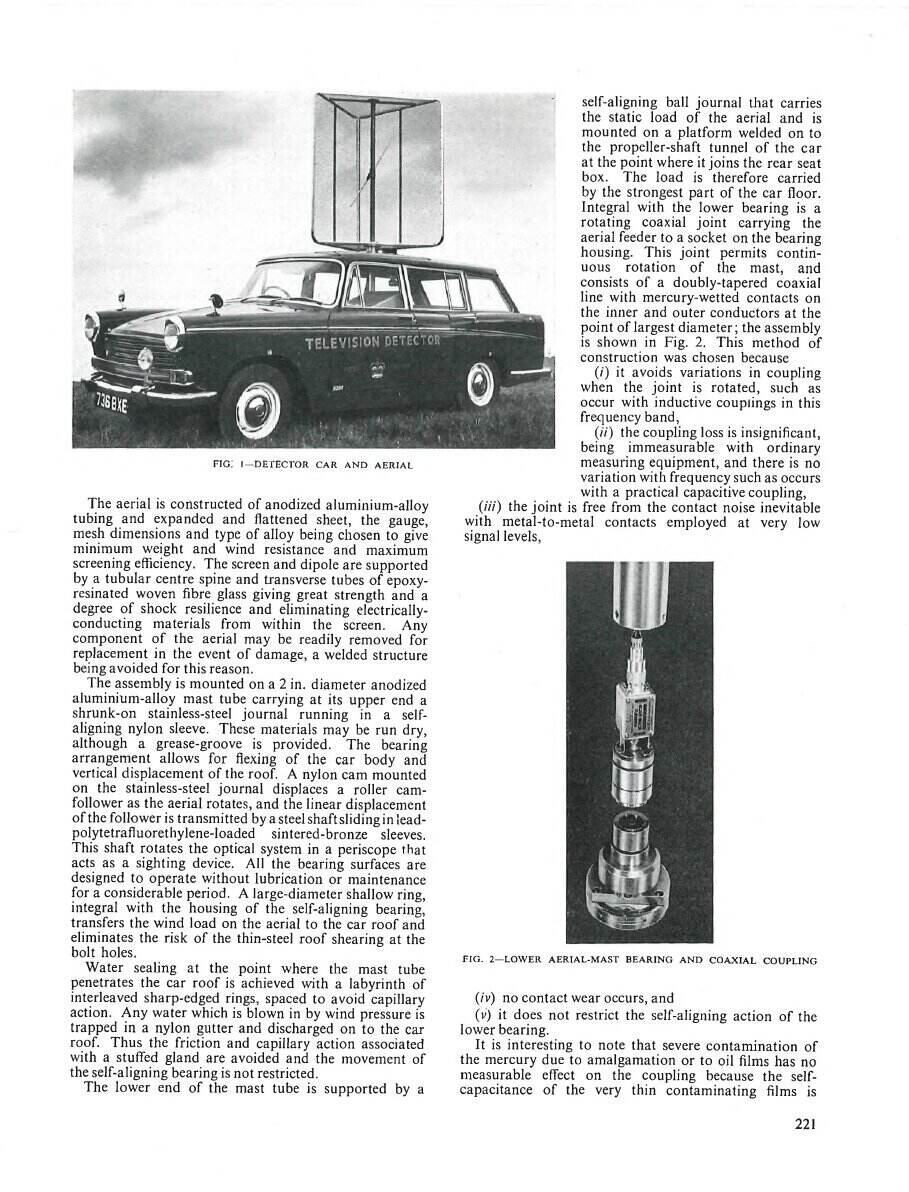
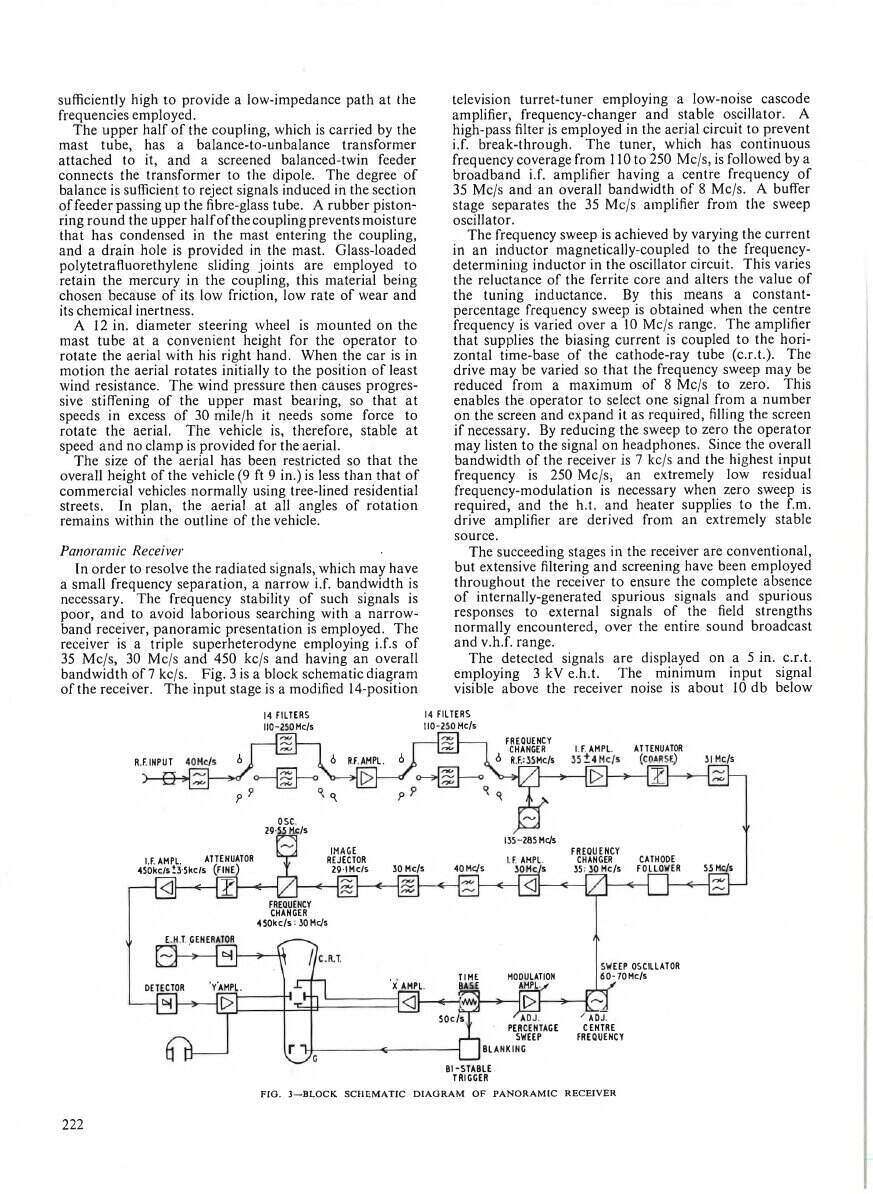
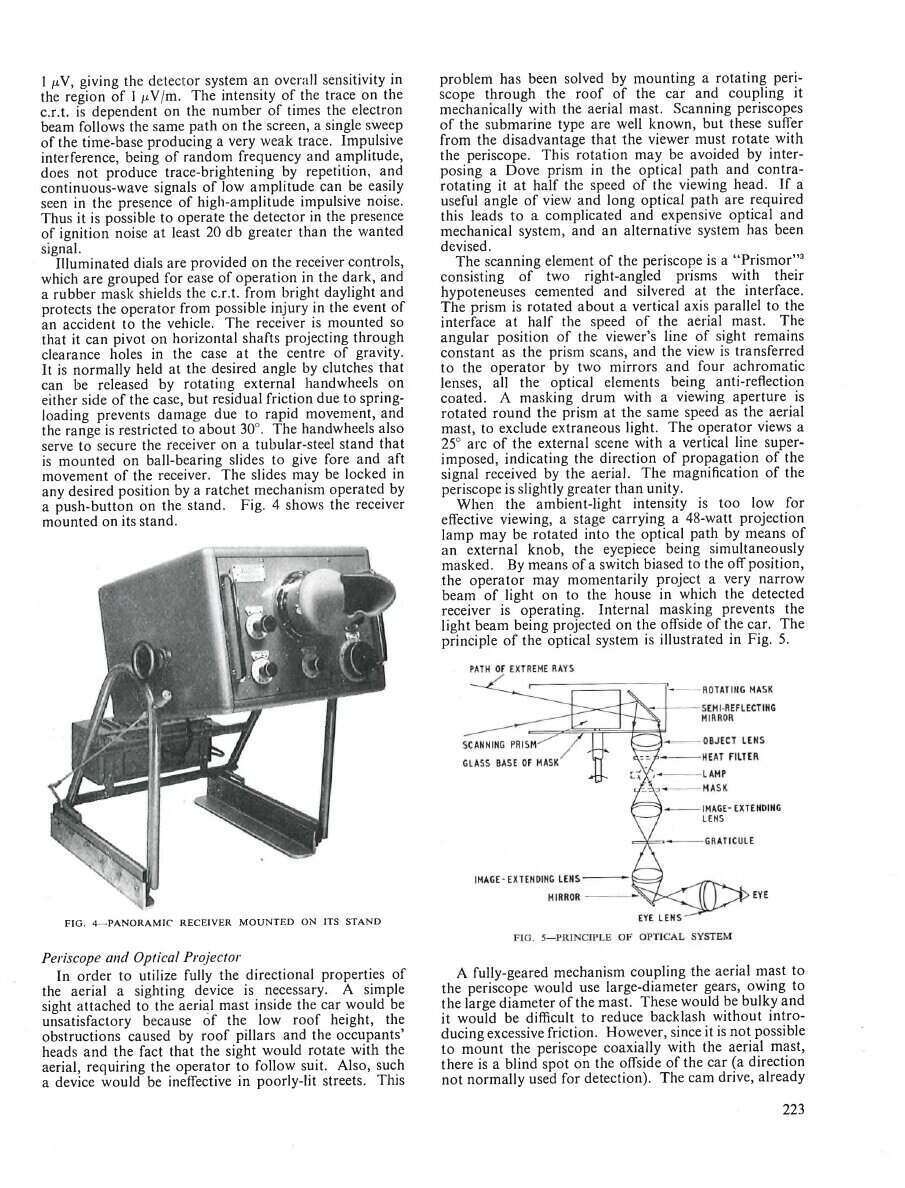
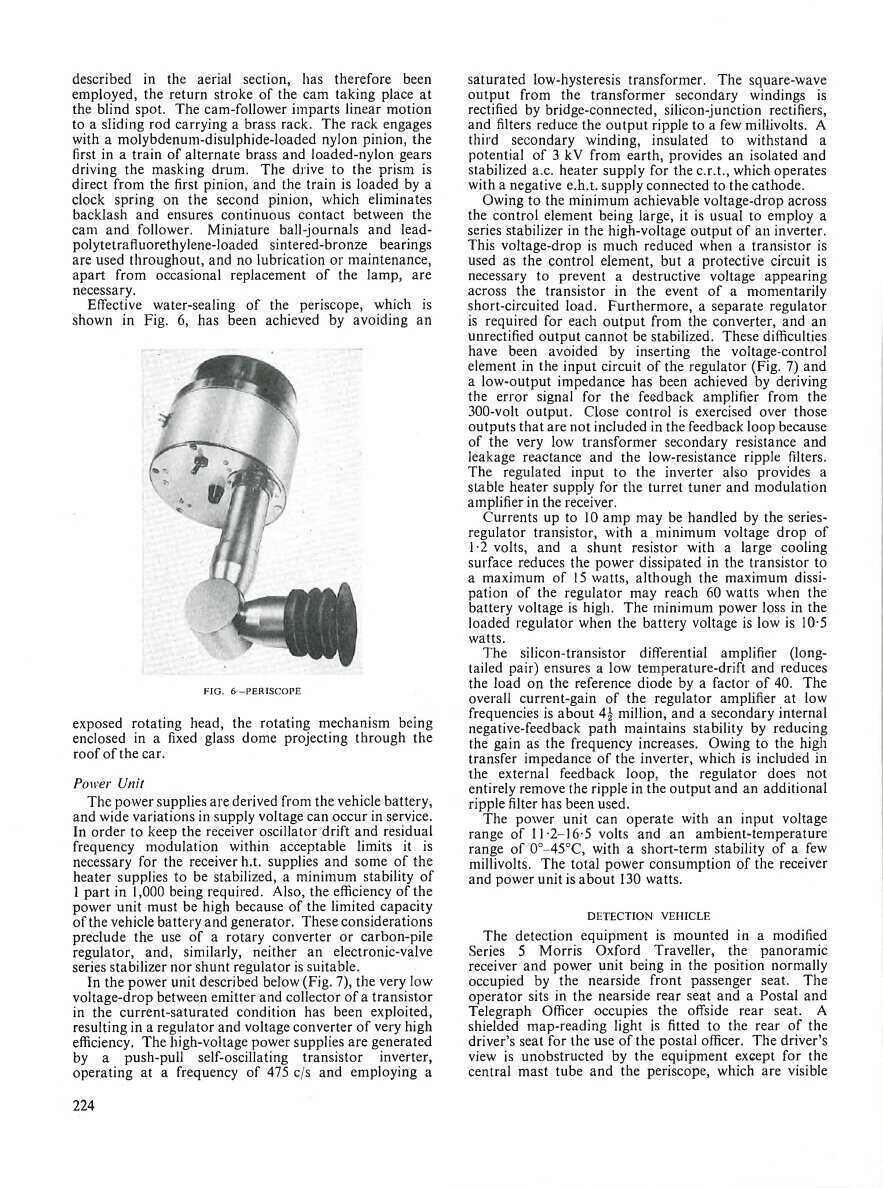
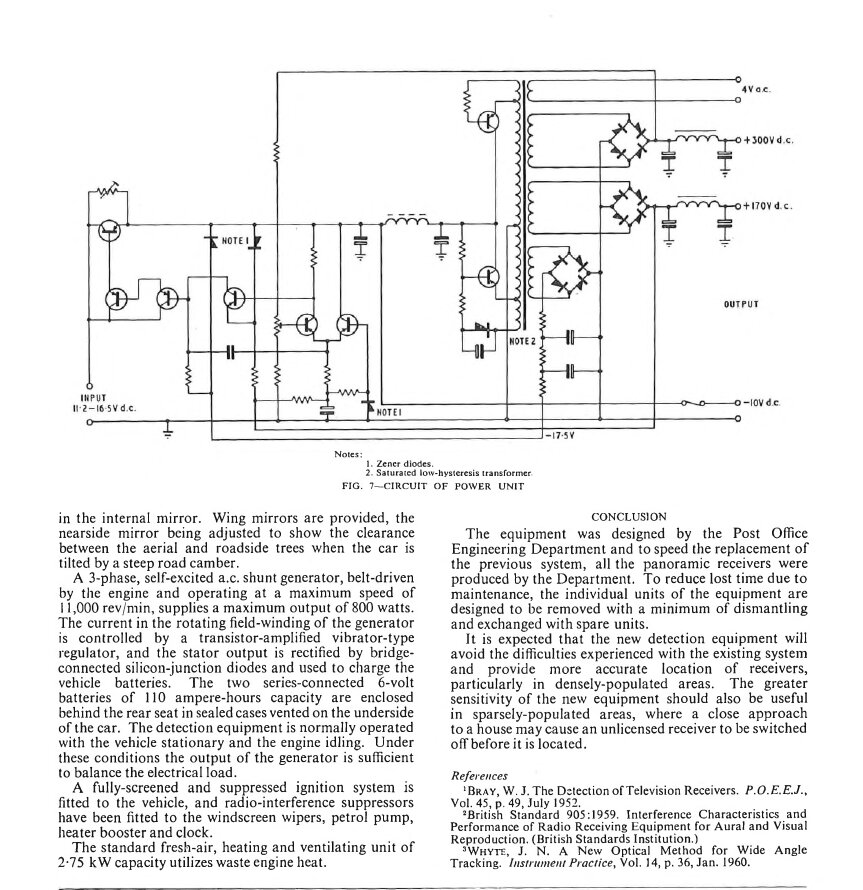
Into the 625 line UHF era.
From an article in October 1969 of the
same journal, we see that UHF television receivers are also detectable.
Again, local oscillator radiation is used to locate the receiver.
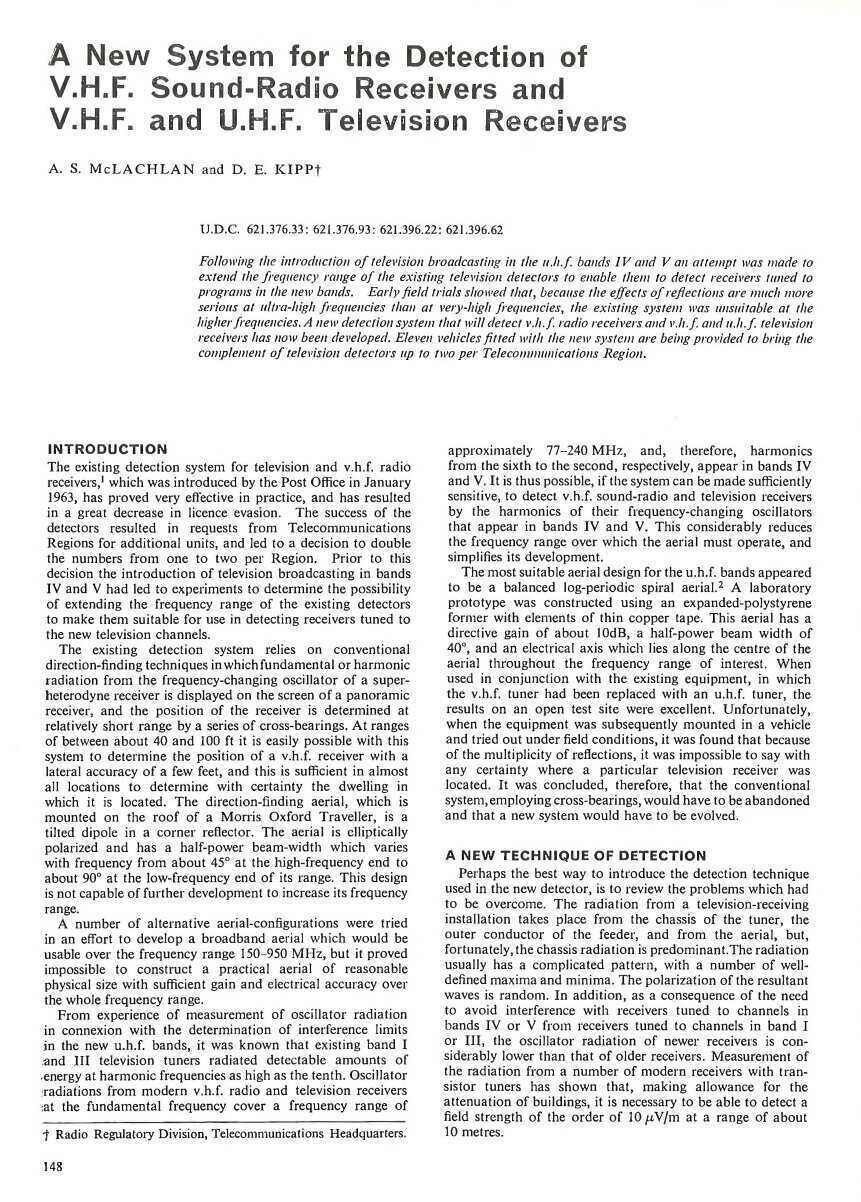
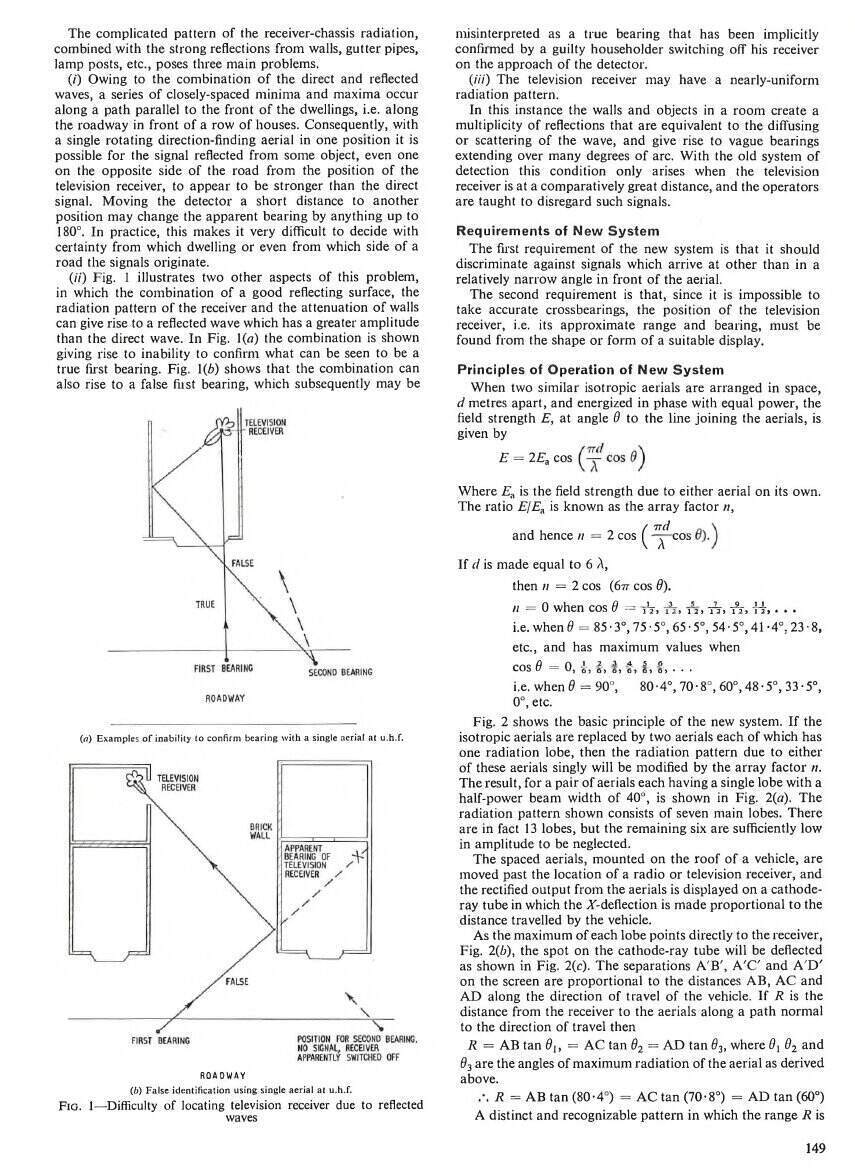
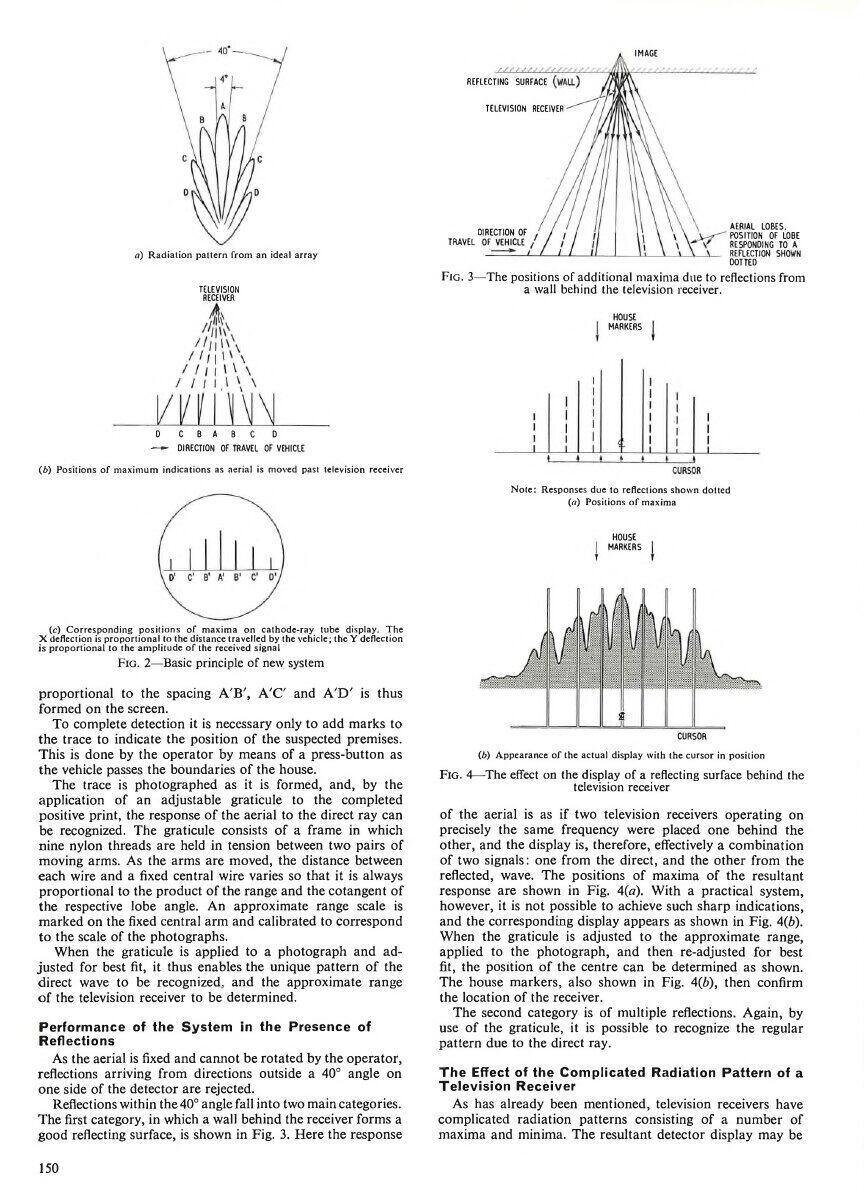
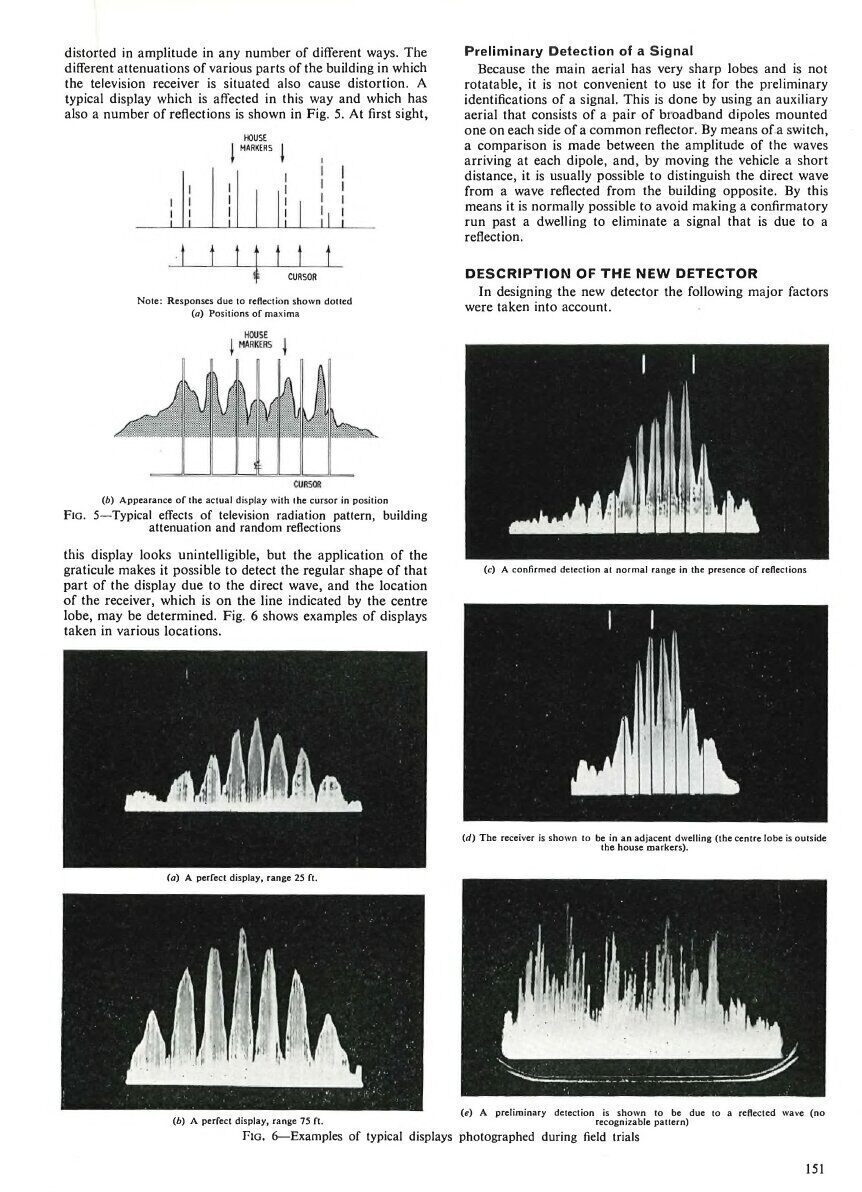
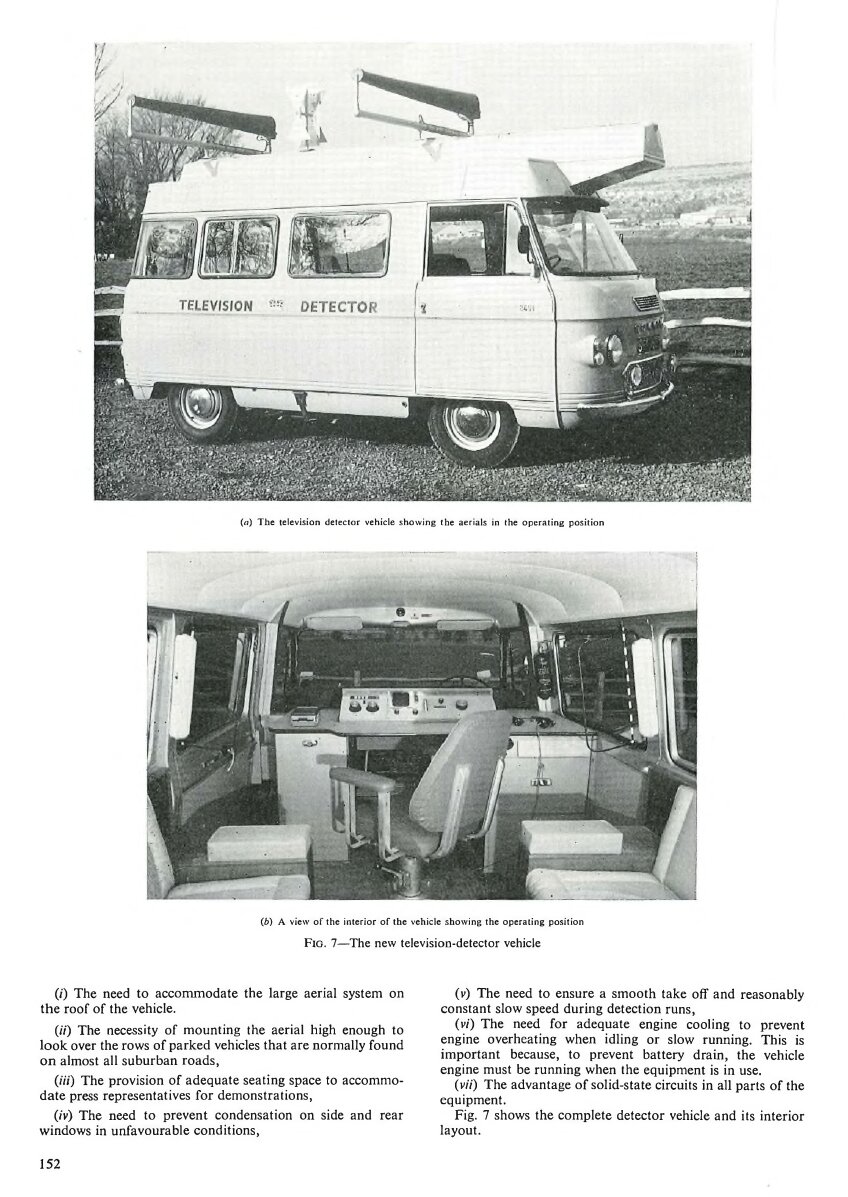
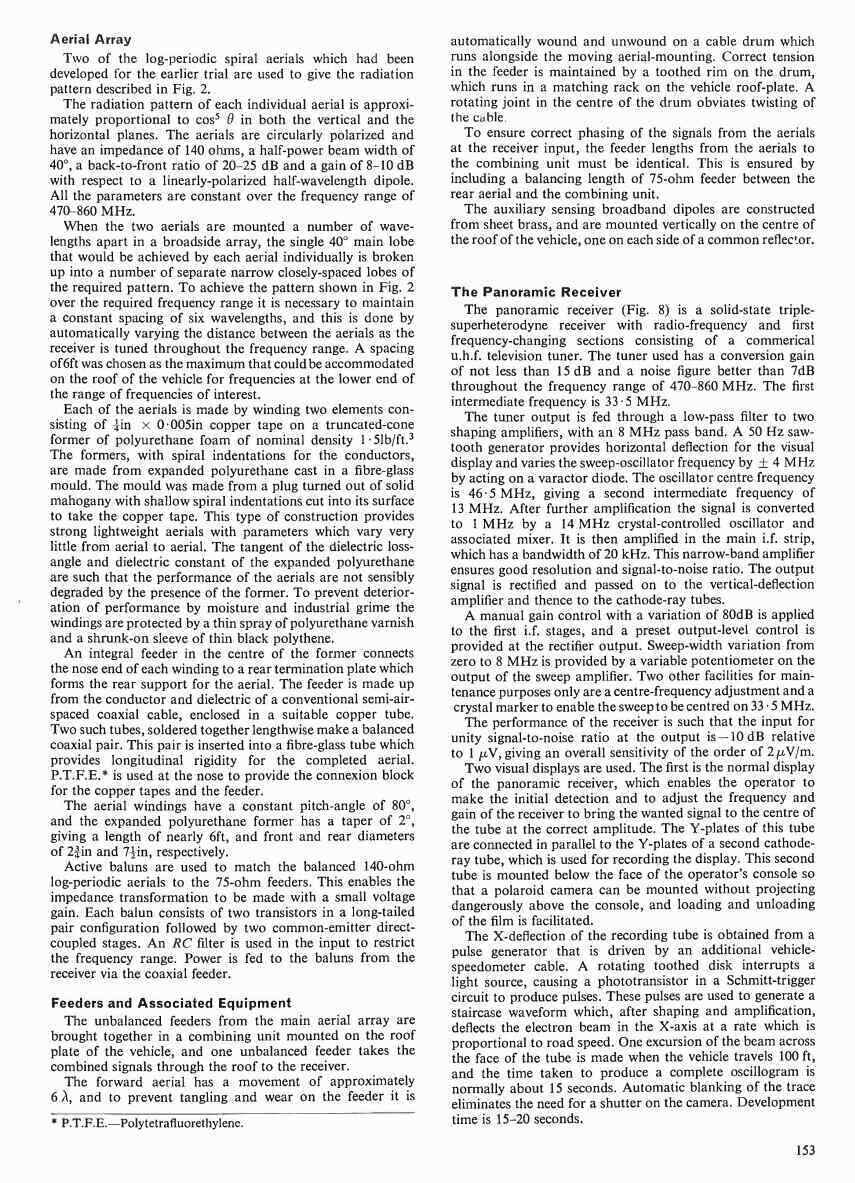
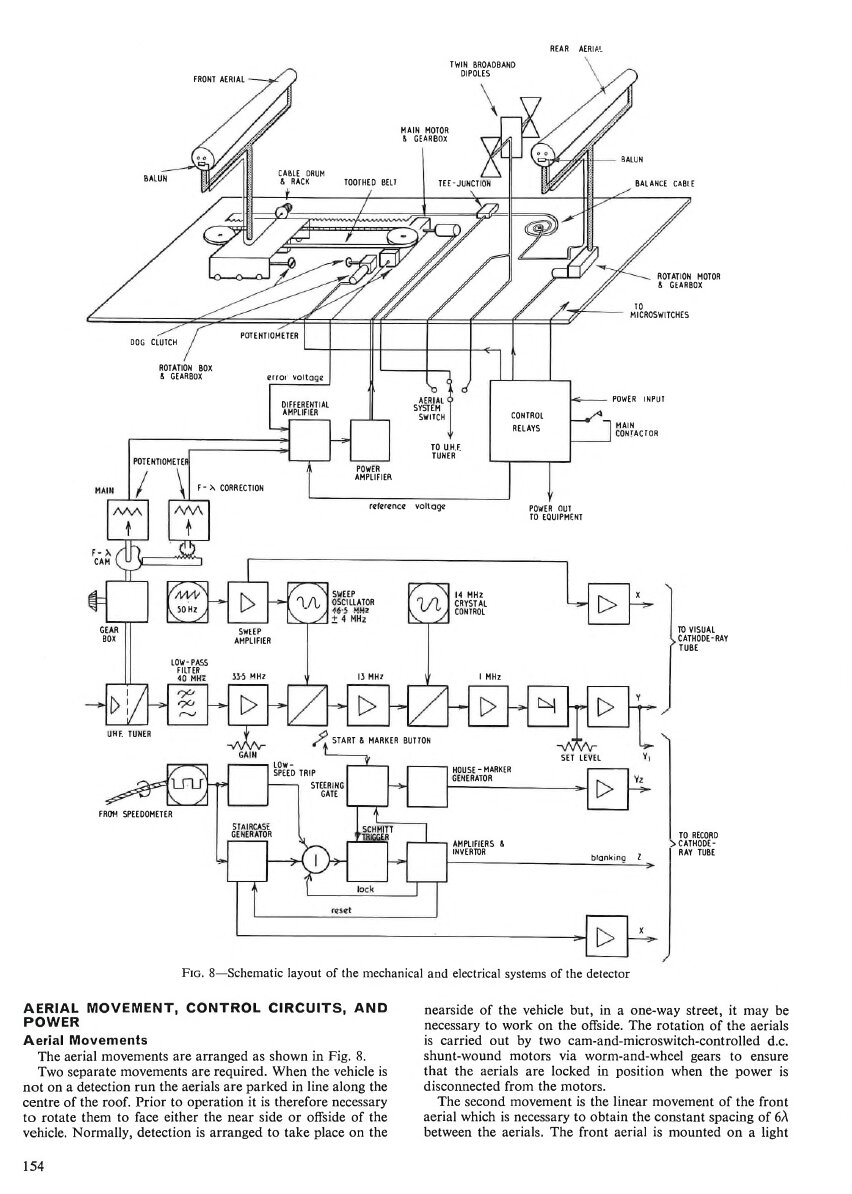
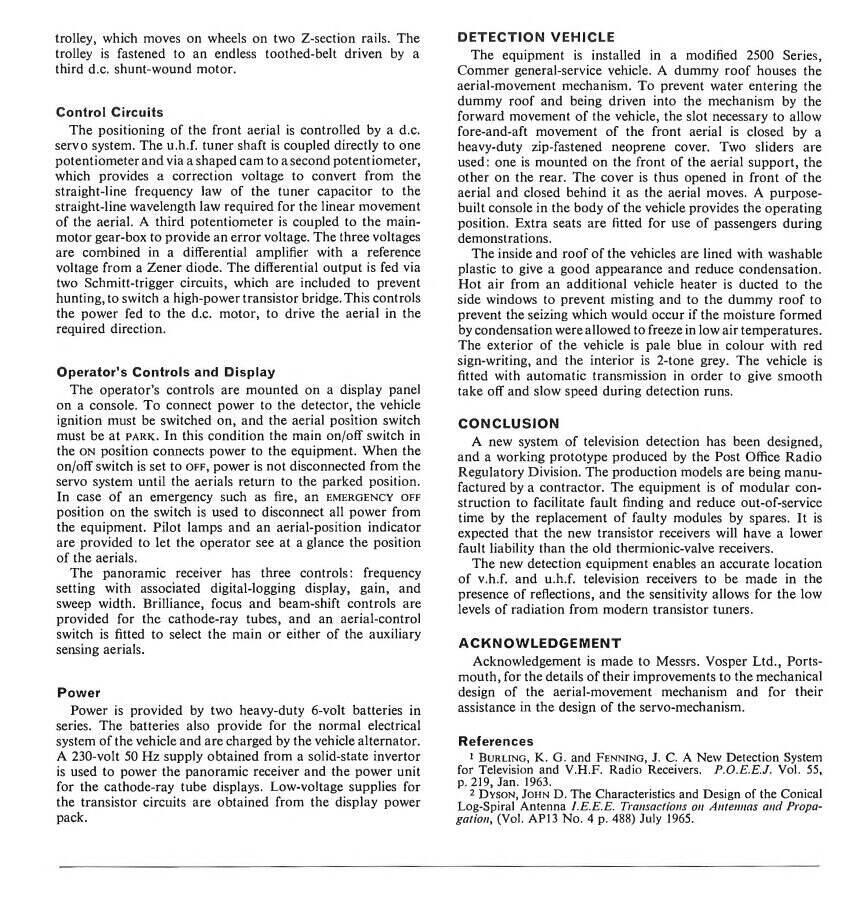
The astute reader will realise that electrostatically
deflected televisions could not be detected by the first method, and indeed
this is mentioned. In the case of the second and third methods, TRF sets
cannot be detected. However, by the early 60's, single channel TRF sets
not being used with a Band 3 converter (for ITA), would be in the minority.
So, if you don't want to pay a licence
fee, the answer is to use an electrostatically deflected television with
a TRF front end.
